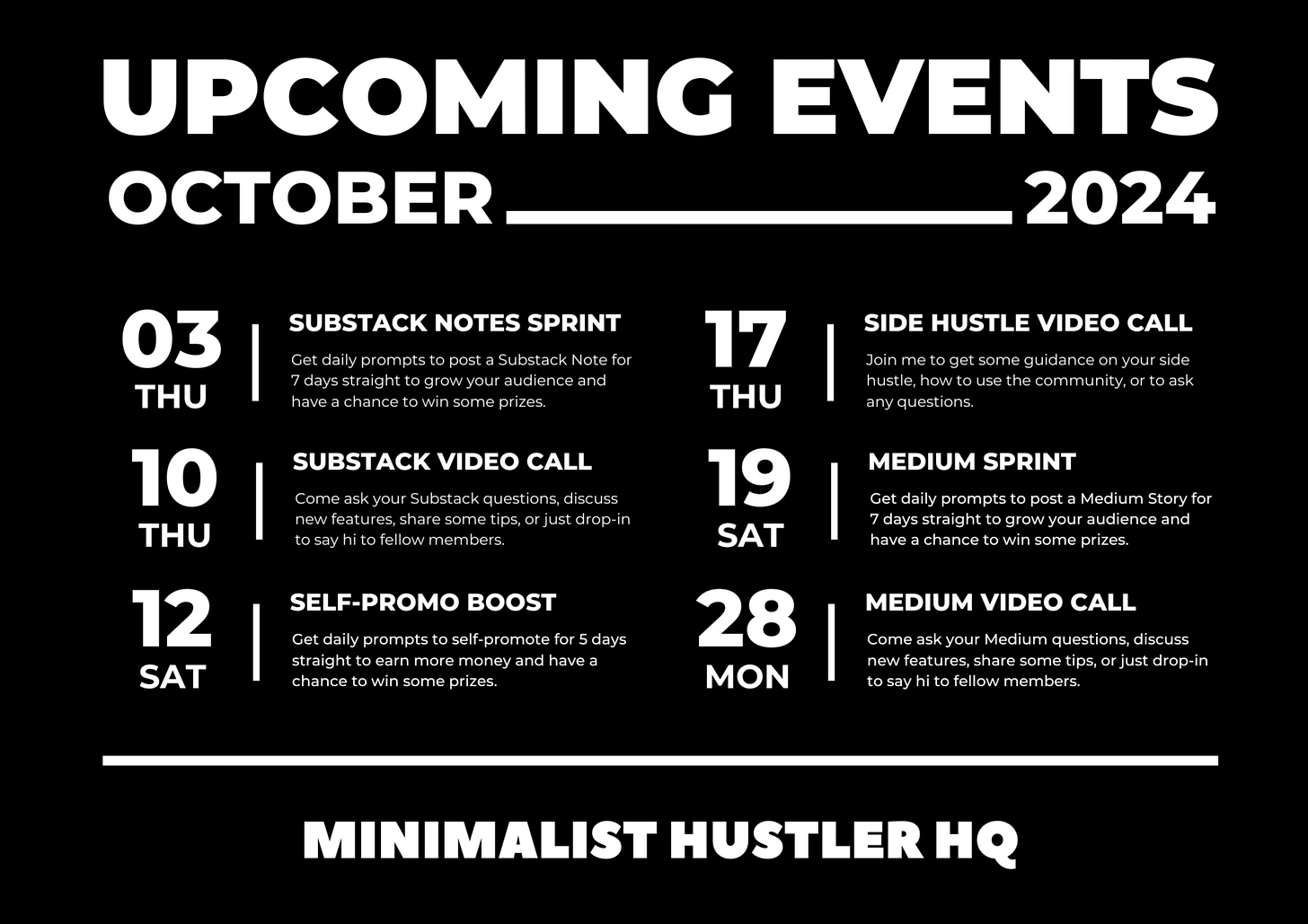As a content creator, your ultimate goal should be to build an audience, but there is one level above having an audience that opens up a whole new series of possibilities.
Creating a Community
A community allows you to engage directly with your audience and build a relationship most creators could only dream of.
It also allows you to get feedback, test ideas, find out what really matters to your audience, and help them address their problems and concerns. All of these factors translate into your wider audience’s needs.
Building a community has few downsides besides the time element, and if you do it correctly, the time element doesn’t become an issue as most well-run communities will generate UGC, User Generated Content given the right environment.
How To Build A Community
I built my first community back in the mid to late 2000s. It was called WP Goldmine and focused on using WordPress to build an online business. At its peak, I had over 600 members paying either $27 a month or $47.
You can do the math on that one because it will make me cry!
I closed it to focus on creating online courses, possibly one of my biggest mistakes, as I now combine a community with my courses!
You build your community like any online business, create related content and link to it.
Offering a free trial often proves to be a good way to get the community started, but my preferred method is to open it up for free for three months. Then, when it’s running smoothly and has interaction with the existing members, grandfather them in (giving them free access) and charge new members.
Deciding on your pricing is usually the biggest problem, but I recommend starting low and sticking with it if it works.
I charge $19 a month and am happy to keep it at that. Each 100 members is worth $1900 each month, and who doesn’t like easy accounting?
I also recommend having an annual fee, usually 6-8 months of the monthly payment, but I use $99 as it’s a nice round number and gives value to those who want to stick around for a year.
Above all, your community should offer unrivalled value to members. Do that, and you’ll keep them indefinitely; I still have members who have been with me for 12 or more years… slightly longer than the industry average of 3 months!
Hosting a Community
Where should you host a community?
In the past twenty or so years, I’ve used everything related to communities, from forum software to Facebook and Discord, but they have all been lacking.
I would STRONGLY advise you to keep away from Facebook for your community as members won’t get notifications of posts, and there are just too many distractions. Facebook kills communities!
Discord is also too distracting and confusing for a simple community.
Personally, I switched to Skool a few years ago (from Mighty Networks, which got too confusing.. seems like a trend!) Skool is simple to use and has excellent Gamification which really makes a difference to engagement.
You can set it up so that members get access to courses and content based on how much they interact and how much value they bring to the community.
It also has a classroom area where you can add courses, since moving there I’ve added over 20 courses. Many of these I’d have had to do launches and promotions for if I didn’t have a community.
If, like me, you love passing on your knowledge but hate the whole info product, Circus, then a community should be a consideration.
You could have a free community and sell your courses or a paid community and give your courses for free or at a reduced price… win-win!
Example Communities
There are several community models you should consider.
• The Free Community
• The Paid Community
• The Free Community With a Paid Upgrade.
Each of these communities works and allows you to build somewhere for your audience to hang out and grow.
I will look at different communities that use these models so that you can see how they look and what could work for you.
All of these are built on the Skool Platform, which highlights another benefit of it… ease of use. You can join any Skool group with one account with a single click.
Free Communities:
I’ve run several free communities in the past, and they are a great way to establish your community and gain some traction.
Earlier this week
launched his Newsletter Insiders Community (I wonder what that could be about?) In a few days, it’s already built a membership of 64, which I hope will be higher after this.Paul is pursuing a model that is free to start and could choose to monetise later. He also can create courses and guides and charge for them if he so wishes.
The free model opens up so many paths to you it’s a great place to start.
Paid Communities
Here we have an example of a community that converted from a free launch to a paid one, the excellent Minimal Hustlers HQ from
.Jamie started for free, then added a monthly subscription it’s a great model that seems to be working well.
Jamie spends a lot of time running challenges and is extremely well organised with a full classroom and even a monthly roadmap… without a doubt one of the most organised forums I’ve been a member of.
If I wasn’t so long in the tooth, I might learn from him!
Whoops!
I can’t believe I got to the end of the newsletter and forgot to add my own Forum!
The Inner Circle takes a slightly different approach. I have designed it to be a combination of a Cohort and a Community, with the aim of helping members build and monetise their online businesses.
I publish courses and daily videos to help people achieve their goals; this week, we started a 2025 Business Blueprint, where each week, I help members to build a simple online business that will be ready to go in 2025.
I mostly use the community to replace my info product business. I love to teach and share my knowledge and this is a great way of doing it without the daily stress of marketing.
I charge $19 a month, or for $99 a year; you get everything I produced for the past few years and next years, courses, books, etc.…
zero stress… bliss!
Check out the VIP Level on the newsletter subscription if this interests you.
Free & Paid Communities
Running free and paid communities is the smart move. Build a free community, give the members lots of value, and then have a paid option to help them implement and get help building their business.
has recently done this with his Tiny Tribes Forums.You have Tiny Tribes Lite where he gives great value and helps people get traction with their newsletters then, if they want to take things further, they can upgrade to: Tiny Tribe Pro
As we see in the next section, this is a great business model, given time. I’d go as far as to say it’s probably one of my favourite business models, especially if you hire some moderators to keep everything running smoothly.
This is what’s possible with a community.
If you want to see just how well these 2 forum models can work, check out these 2 established forums.
Here is Stephen Popes Content Academy with 8200 free members, leading to his No Code Architects, with 1000 members paying up to $97 per month.
Not a bad little business he’s built there!
Questions?
If building a community appeals to you and you have questions, just ask.
I’ve been building them for almost 20 years, so there is probably not a problem I haven’t come across and overcome!
Get Access To Everything
As I mentioned above, you can get annual access to my community and every course and book I have or release during your membership for just $99
Get access via the paid subscribers VIP Option here or check out this page for links so you can see some of what you’ll get







Great article Mark. I do see the benefits of communities and of course I see the benefit of being a paid community even if it is a low barrier entry. Often you get a small, engaging and tight community behind a paywall and filtering out unwanted grief.
Mark, great article! Seems like communities are the new black in content creation. I'm curious, do you think Substack can be one of those platforms in the future? I mean a community-centered platform?